A row of tablets found on a marble bench in the old cemetery of Tel Aviv - Trumpeldor Cemetery
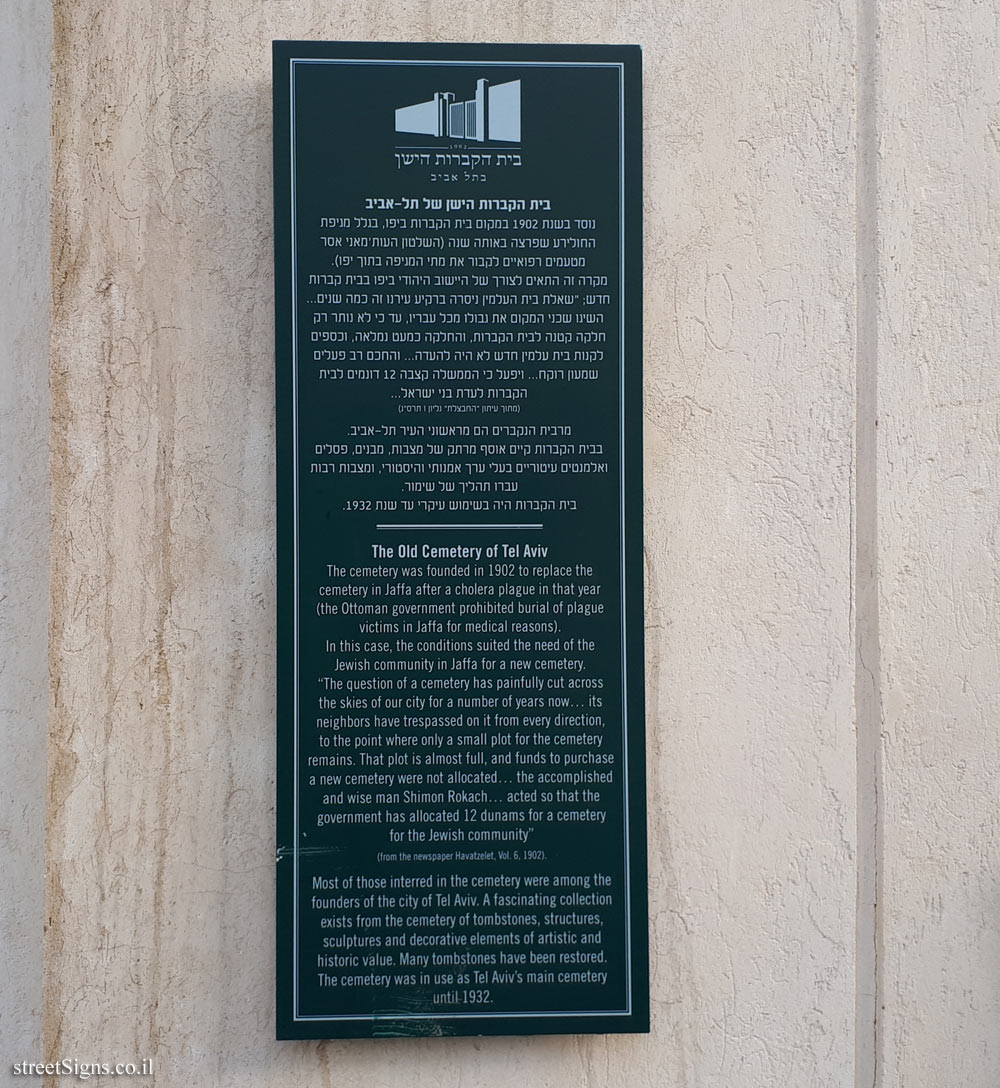 Click for sign's details
Click for sign's details The sign and its surroundings are shown in the following picture (from which the picture of the sign was taken)
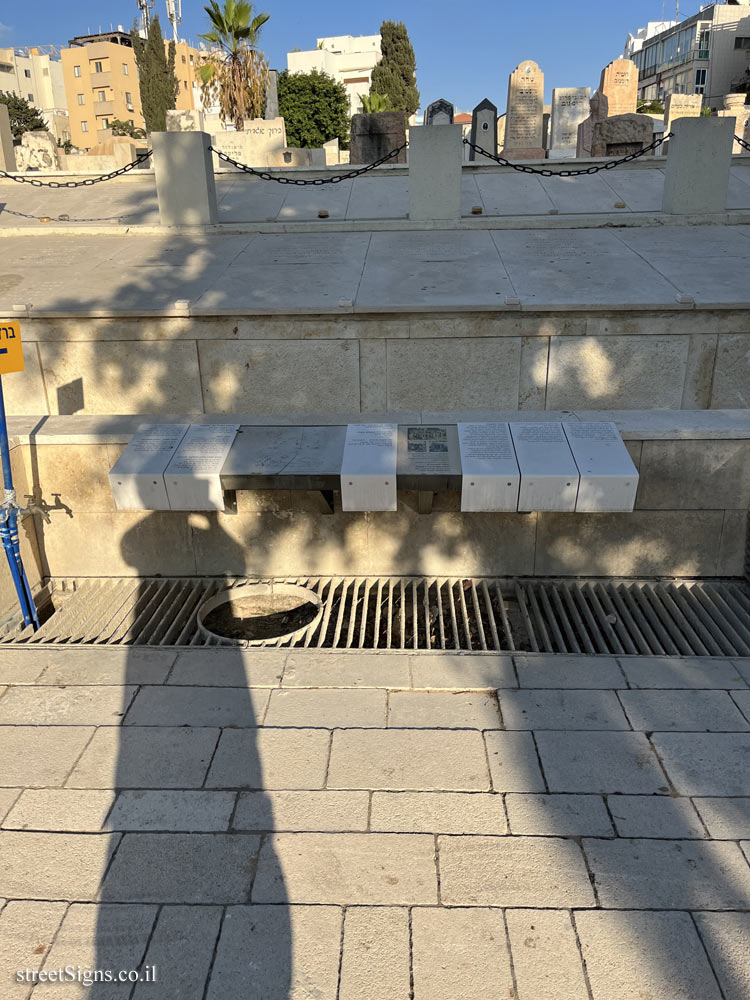 Click for a larger image
Click for a larger image In the following pictures, the different plates are shown enlarged, all taken by the same photographer on the same day
Plate 1-3 -
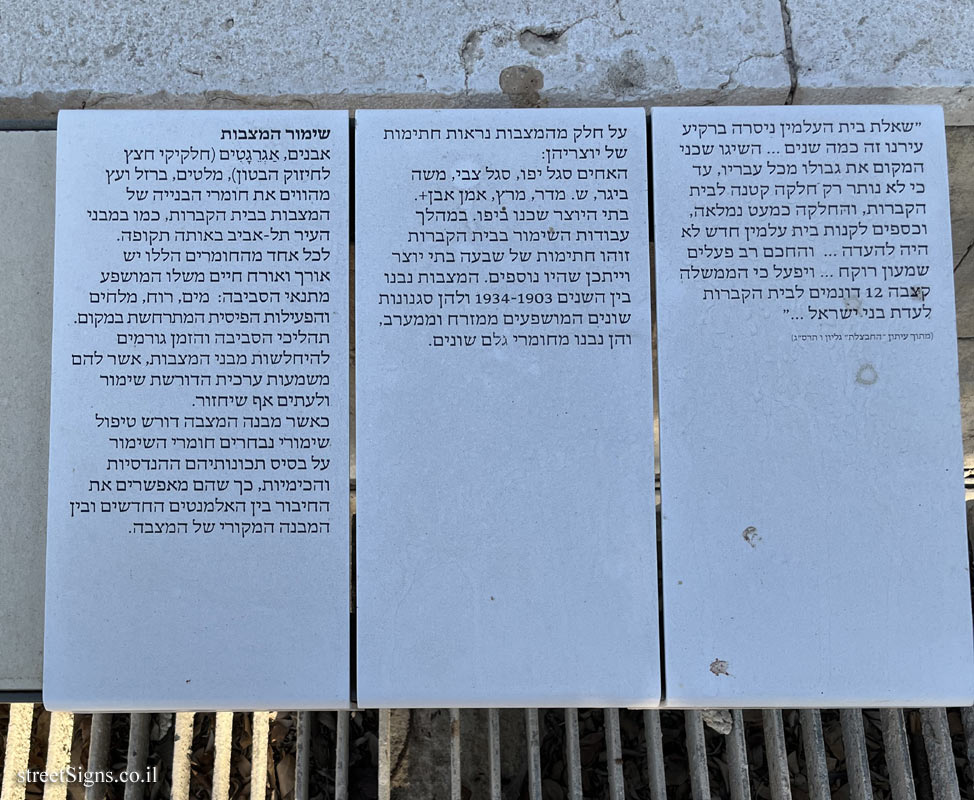 Click for a larger image
Click for a larger image Plate 4 -
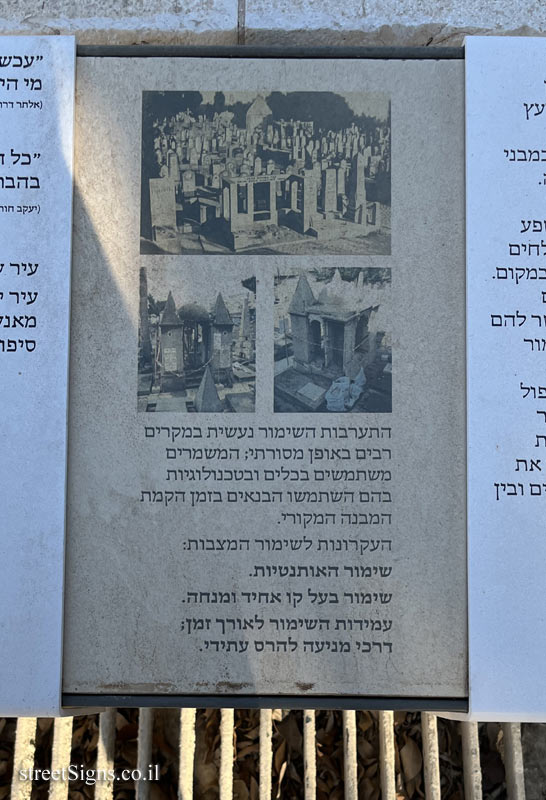 Click for a larger image
Click for a larger image Plate 5 -
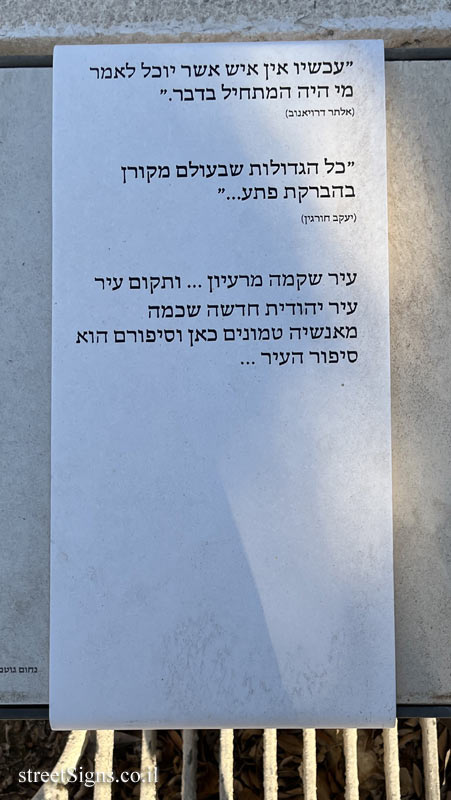 Click for a larger image
Click for a larger image Plate 6 -
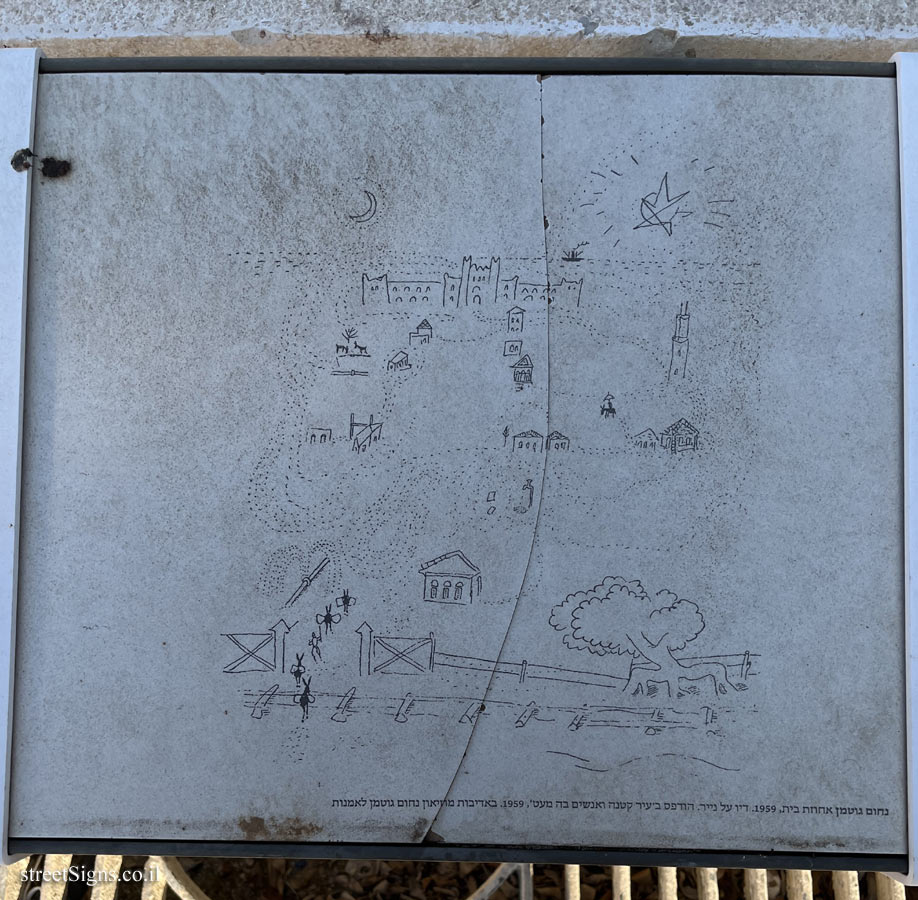 Click for a larger image
Click for a larger image Plate 7-8 -
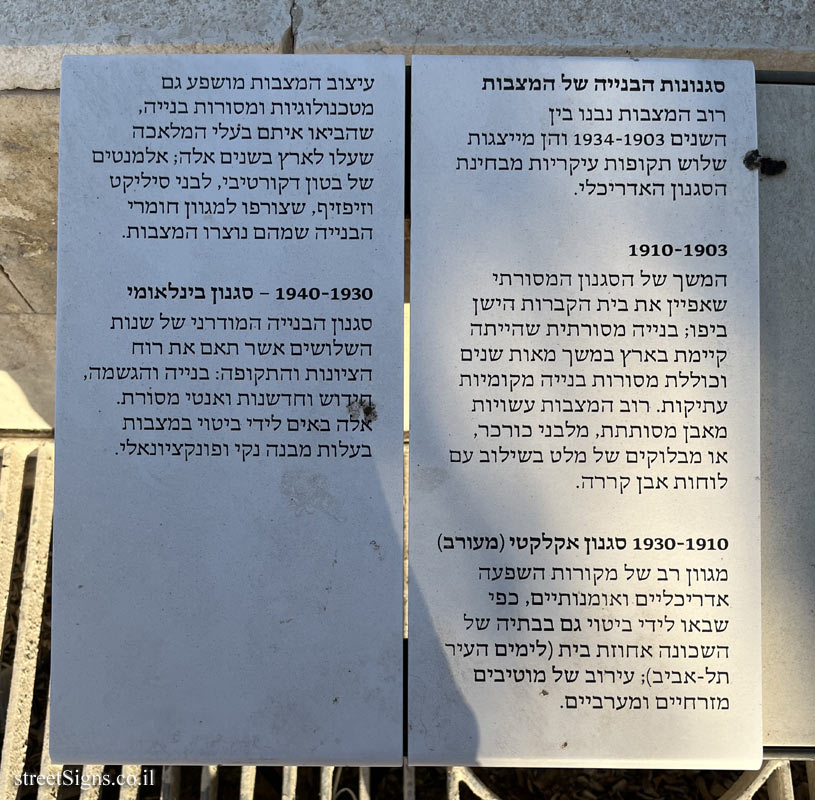 Click for a larger image Translation of the text on the sign
Click for a larger image Translation of the text on the sign:
[Plate 1]
"The question of the cemetery has been seen in our city for several years ... the neighbors of the place have reached its border from all sides. Until there was only a small plot left for the cemetery, and the plot was almost full, and the congregation did not have the money to buy a new cemetery ... and the wise Rabbi Shimon Rokach ... and it will work because the government allocated 12 dunams to the cemetery for the Bnei Yisrael community..."
(From the newspaper "Havatzelet, Vol. 6, 1902)
[Plate 2]
Signatures of their creators are visible on some of the tombstones:
Brothers Segal Jaffa, Segal Zvi, Moshe Bigar, Sh. Medar, Mertz, Aman Even+.
The creator’s homes were in Jaffa. During the conservation work at the cemetery, signatures of seven makers’ houses were identified and there may have been more. The headstones were built between the years 1903-1934 and have different styles influenced by the East and West, and they were built from different raw materials.
[Plate 3]
Preservation of gravestones Stones, aggregates (gravel particles to strengthen the concrete), cement, iron and wood constitute the construction materials of the tombstones in the cemetery, as in the buildings of the city of Tel Aviv at that time. Each of these materials has its own lifestyle that is affected by the environmental conditions: water, wind, salts and the physical activity that occurs in the place.
The processes of the environment and time cause the weakening of the structures of the headstones, which have a valuable meaning that requires preservation and sometimes even restoration.
When the structure of the headstone requires conservation treatment, the preservation materials are selected based on their engineering and chemical properties, so that they enable the connection between the new elements and the original structure of the headstone.
[Plate 4]
[Photos of tombstones]
The conservation intervention is done in many cases traditionally; The conservators use the tools and technologies that the builders used during the construction of the original structure.
The principles for the preservation of the tombstones: the preservation of authenticity. Preservation with a uniform and guiding line, the durability of the preservation over time; Ways of preventing future destruction.
[Plate 5]
"Now there is no one who can say who started the matter."
(Improved Droyanov)
"All the great things in the world originate from a sudden flash..."
(Yaakov Khorgin)
A city that arose from an idea ... and a new Jewish city will be built, some of whose people lie here and their story is the story of the city...
[Plate 6]
[Illustration by Nahum Gutman]
Nahum Gutman Ahuzat Bayit, 1959, ink on paper, printed in A Small Town and Few People, 1959. Courtesy of the Nahum Gutman Art Museum
[Plate 7-8]
The construction styles of the tombstones Most of the tombstones were built between 1903-1934 and represent three main periods in terms of architectural style.
1903-1910 A continuation of the traditional style that characterized the old cemetery in Jaffa; Traditional construction that has existed in the country for hundreds of years and includes ancient local construction traditions. Most tombstones are made of hewn stone, kurkar bricks, or cement blocks combined with cool stone moisture.
1910-1930 eclectic style (mixed) A great variety of architectural and artistic sources of influence, as were also reflected in the houses of the neighborhood Ahuzat Bayit (later the city of Tel Aviv); A mix of eastern and western motifs.
The design of the tombstones is also influenced by construction technologies and traditions. brought with them by the artisans who immigrated to Israel in these years; Elements of decorative concrete, silicate bricks and zif-zif, which were added to the variety of construction materials from which the tombstones were created.
1940-1930 – international style The modern construction style of the thirties which matched the spirit of Zionism and the period: construction and fulfillment, renewal and innovation and anti-tradition. These are reflected in tombstones with a clean and functional structure.
Learn about:

 Click for sign's details
Click for sign's details  Click for a larger image
Click for a larger image  Click for a larger image
Click for a larger image  Click for a larger image
Click for a larger image  Click for a larger image
Click for a larger image  Click for a larger image
Click for a larger image  Click for a larger image
Click for a larger image